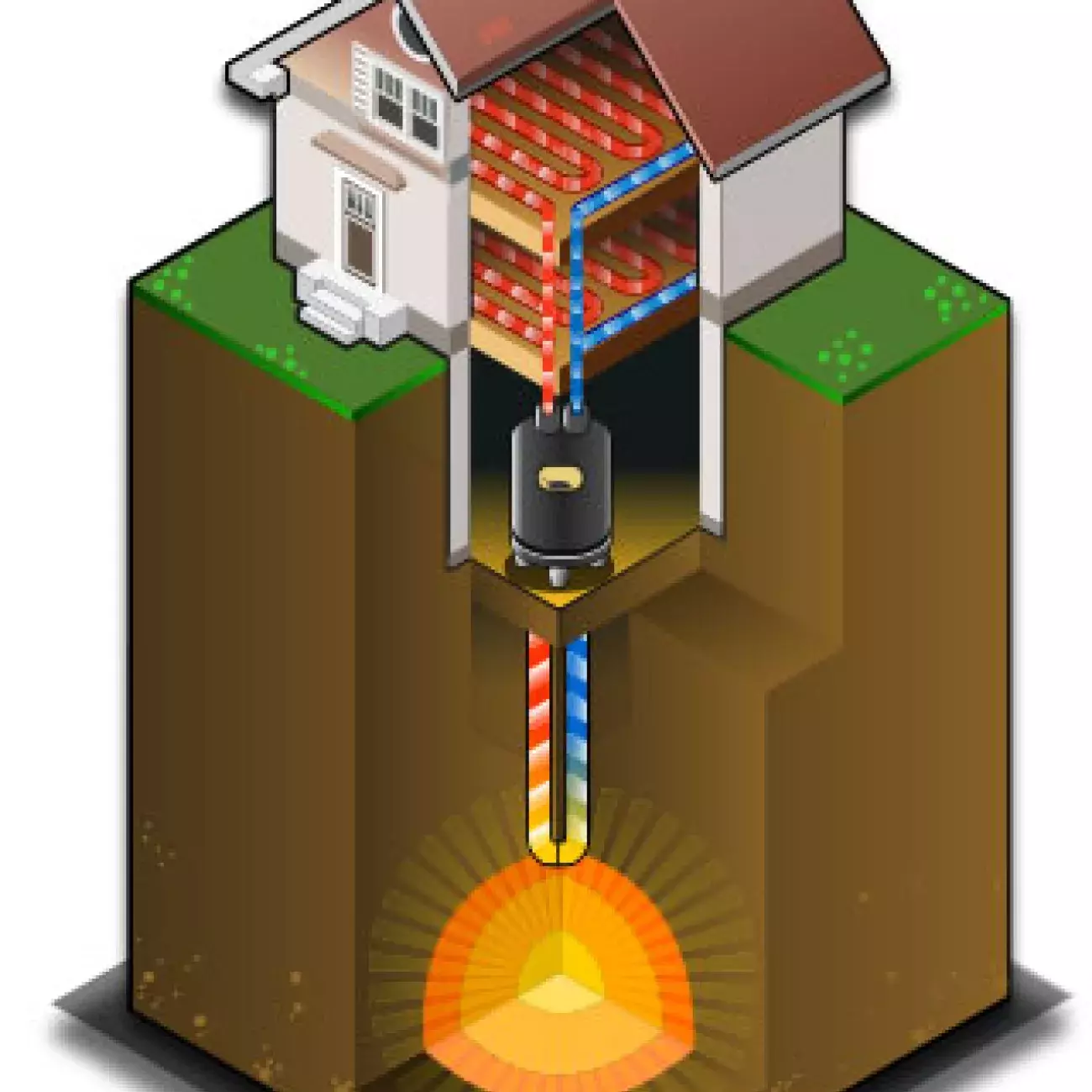Geothermal Heat Pumps: How They Work
Geothermal heat pumps are similar to air-source heat pumps, but instead of using heat found in outside air, they rely on the relatively constant heat of the earth (thermal energy) to provide heating, air conditioning and, in most cases, hot water.
While ground-loop and water-loop heat pump systems may be slightly affected by higher temperature fluctuations, they are not as sensitive to temperature changes as air-source heat pumps. The reasons are that ground and water temperatures, a few feet below the Earth’s surface, stay relatively constant throughout the day or year. For this reason, ground loop heat pump systems remain extremely efficient throughout the year in virtually any climate.

How It Works
In winter, geothermal heat pump systems collect the Earth’s natural heat through a series of pipes made of copper or plastic, called a loop, installed below the surface of the ground or submersed in a body of water. Fluid circulating in the loop carries this heat to the home. There, an electric compressor and a heat exchanger concentrate the Earth's energy and release it inside the home at a higher temperature. Ductwork distributes the heated air to different rooms. In summer, the process is reversed in order to cool the home. Excess heat is drawn from the home, expelled to the loop, and absorbed by the Earth.
Installation
Geothermal heat pump systems are comprised of an indoor unit that is installed in a basement or attic, and some are small enough to fit on a closet shelf. The indoor location also means the equipment is protected from mechanical breakdowns that could result from exposure to harsh weather.
Outdoors, the ground loop systems can be installed in four ways:
- Horizontal. Long trenches are excavated for the loop(s), which require a substantial amount of land. This is generally the most cost-effective option for homeowners, particularly for new homes where sufficient land is available.
- Vertical. Deep holes are bored into the ground, which require a great deal less land for installation then horizontal loops. This option is often used for commercial buildings and schools and for homes where land area is limited.
- Pond/Lake. Trenches are excavated similar to the horizontal installation, but lead to a body of water where coils of pipes sit at the bottom of the lake/pond. These loops use the water, rather than the ground, for heat transfer. This is typically the lowest cost option if the site has an adequate body of water.
- Open. Water is drawn from a well, lake, or stream and pumped into the geothermal unit. The water is then returned to the ground or body of water. This option is only available if there is an abundant supply of usable water.
In the AHRI Certification Directory and Directory of AHRI Certified Geoexchange Heat Pumps, performance data on horizontal, vertical, and pond/lake systems is listed under the ground-loop heat pump (GLHP) application. Performance data on open systems is listed under the ground water heat pump (GWHP) application. AHRI does not certify units that only heat water.
Environmental Benefit
With nearly 500,000 geothermal heat pumps installed annually, they collectively help reduce U.S. greenhouse gas emissions by preventing more than 1 million metric tons of carbon dioxide from being generated each year. Over an average 20-year lifespan, every 100,000 units of nominally sized residential geothermal heat pumps will save more than 24 trillion Btus of electrical energy, and save consumers approximately $500 million in heating and cooling costs at current prices. Over the same period, the U.S. Environmental Protection Agency (EPA) estimates these 100,000 units reduce greenhouse gas emissions by almost 1.1 million metric tons of carbon equivalents. Shipments of geothermal heat pumps are on the rise.
Find AHRI Certified™Geothermal Water Source Heat Pumps and Direct Geoexchange Heat Pumps